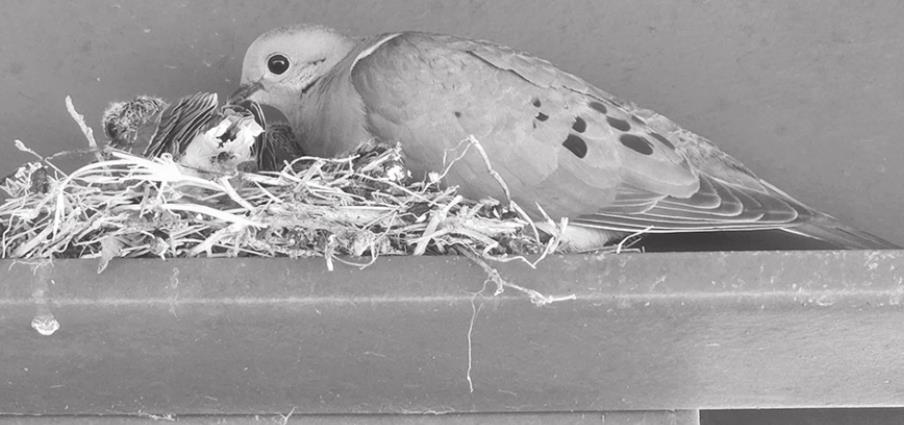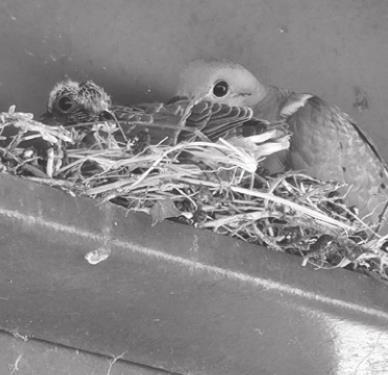
A nesting mourning dove and her newly-hatched chick. Photos by Celeste Cook


The mourning dove and her hatchling from another angle.
EXPLORING NATURE: MOURNING DOVES
An avian newcomer has been beating the summer heat by splashing around in my backyard birdbath: A mourning dove.
This is the most widespread dove in Texas and across the continent. It is the only native Texas bird found in every one of the state’s 254 counties. Only the common house sparrow comes close to being so ubiquitous.
However, people don’t hunt sparrows, but they love to shoot mourning doves. They are the most widely hunted of all game birds. Millions are shot every year.
This trim-bodied bird has a small, round head and slender neck. The long, pointed tail is edged with white. Its overall plumage is a soft brown, but there are black spots on the upper wings of adult birds and a pinkish tint on the breast.
The mourning dove is in the same general family as the pigeon. One of the most famous variety of pigeons, of course, was the ill-fated passenger pigeon.
Like the mourning dove, the passenger pigeon was also found in the millions. It was the most common bird in the world and traveled in flocks of hundreds of millions. One flight contained two billion birds, and John James Audubon once watched a single flock pass overhead for three days. He estimated that at times as many as 300 million pigeons flew past in one hour. Wow.
In Texas, a single flock was reported flying over Washington County for three consecutive days in 1853.
By 1900, the passenger pigeon was extinct, its demise hastened by hunters who killed them by the millions.
Luckily, the mourning dove, although heavily hunted, has managed to survive by dispersing from Canada to Panama and by nesting at least twice a year. Texas birds breed virtually yearround with peak season being March through September.
The mourning dove’s low call is a mournful sound that gives the bird its name. Some folks say it sounds like “Who cooks for you?”
Mourning doves can be found in fields, prairies, deserts, woodlands and just about any habitat.
Including my birdbath.











